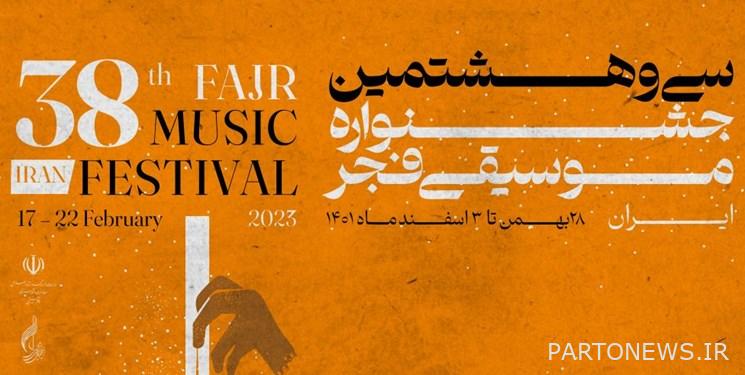Fajr Music Festival The third night of the research department; Description of “bases and terminals in the music of the East”

According to Fars news agency, on the third night of the research section of the 38th Fajr Music Festival, Reza Mahdavi (anchor and expert) of Talk Radio was the host of “Abtin Javid” of Pajhw music.
In this meeting, Abtin Javaid (musicologist) explained the “bases and endings in Eastern music” and explained: it has been seen many times or everyone has experienced that not only the experts but also ordinary people who listen to music and are the audience of music. Don’t know what kind of music they are listening to? Is it traditional or folk? Is it traditional or classical? And even in this case, we have come across the issue many times that in Iran we call what is in the order and system, traditional music! But when we take it outside the borders, we call it classical music; Sometimes it is manipulated so much that it misleads us. That is, we don’t know what elements classical and traditional music or even ritual music has?
He added: We should know what is the definition of classic? Classic has a definition: “During a period of time, it is judged as the highest quality of something outstanding in its own kind.” This is a general definition, and we have another definition of classic: “In a simple and stylish style that does not follow fashion!” “Classic” itself is not a follower of fashion and does not change with the issues of the day and carries an originality with it and has durability. In music, they say that classical music generally refers to the music of the Western world, and of course, it also refers to the classical music of the East, because they say that it has a chart that sometimes distinguishes it as Western music; But in general, because the East is now involved in classical music, there is no East and West. This period started in the 9th century in music and things have been added to it, even though Stravinsky writes the “Rite of Spring” symphony and Nijinsky performs on that theater and people throw eggs at him, but again he does not leave the classical definitions. This means that the artist has entered the neoclassical section, and of course the classical elements do not leave his work; These are the definitions that exist in the West.
In response to the moderator’s question, this musical scholar continues to answer the question of whether we are allowed to redefine definitions in terms of time in the passage of time. He said: Of course yes; We are human and like everything around us, we also change and we need to know the basics so that we can make changes in it. For this reason, classical music in India was influenced by England after being colonized for two centuries, but an interesting thing happened in India; Although English music and European music took symphonic music from them, for example, in northern India, in the Rajasthan region, music and theater schools, even though everything about Indian culture and art was banned at that time, “Gharana” music was created, which is said to be “Gharana” which is the cave or in the case of East India it is called “Bani”; But who is the creator of this music? In addition to preserving this music, the Indians also preserved this music. This is exactly the path that we did not take and did not develop and even stopped its development.
He added: Iran’s instrumental music did not grow from one era to the next, and no corner was added to its instruments, but the Indians did this and preserved their own period music. They preserved their literature based on this period music, and along with that, they also learned Western music, and then created something called “soft classical” in their modern vocabulary. In addition to preserving their music in houses, caves, and underground, Indian music masters also observed external events. They became aware and understood what classical music was and then adapted it to their own music. They examined everything from the rhythm and characteristics of the instruments to the ability of soloists and the ability to play in a group and they came to four indicators and said to themselves that any music in India that wants to reach the classical category must have these four indicators: “reliable written background”, “style” And the standard educational language in techniques in line with melody and beat accompaniment, “solo performance ability” and “repertoire and standard presentation method” should have.
end of message/
You can edit this article
Suggest this article for the first page

